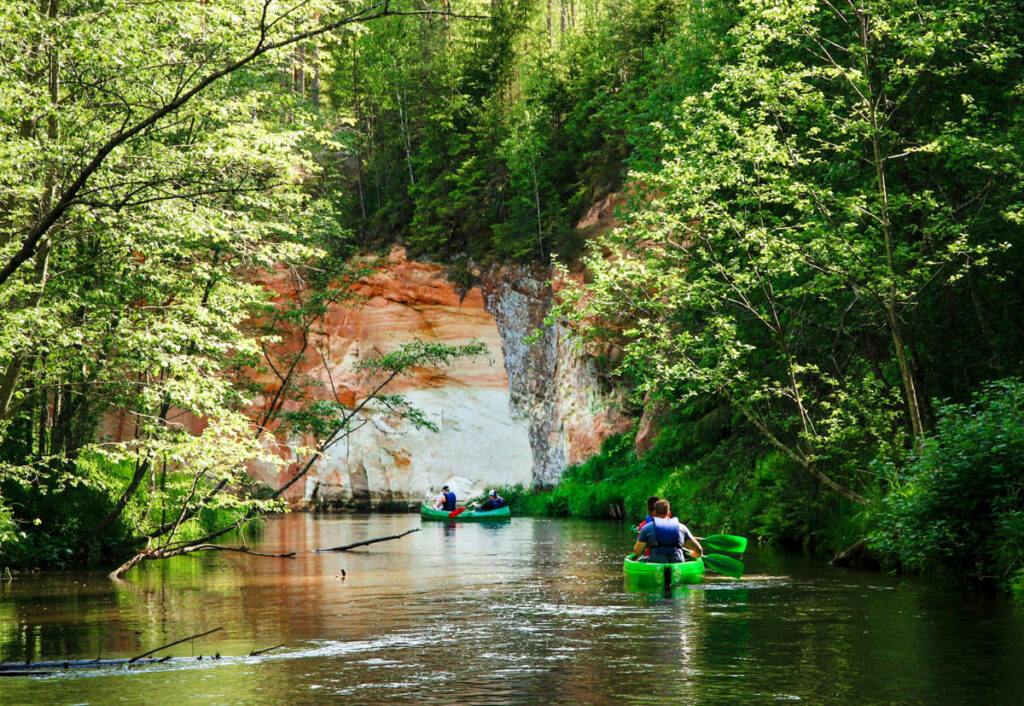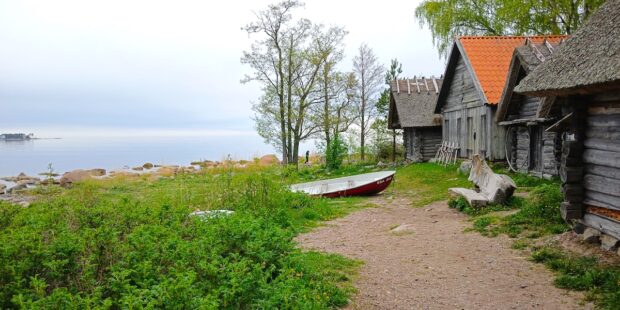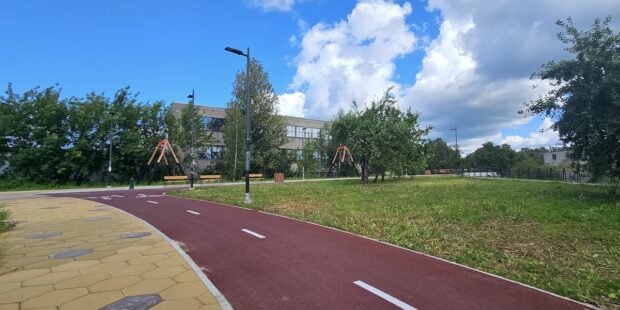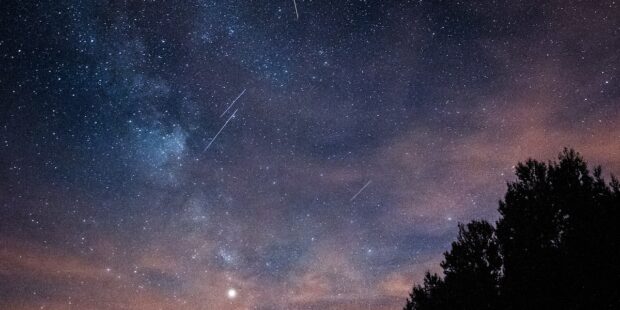Estonia’s seven natural wonders
Text Mikko Virta Photos Mikko Virta, Mati Kose, Andrei Chertkov, Katrin Laurson
 The Pakri cliff is a breathtakingly beautiful destination, located only an hour's drive from Tallinn. You can also visit the beautiful Pakri lighthouse nearby.
The Pakri cliff is a breathtakingly beautiful destination, located only an hour's drive from Tallinn. You can also visit the beautiful Pakri lighthouse nearby.
1. The rugged cliffs and beaches
The limestone cliffs rise majestically from the sea. Storms breaking off huge chunks that rest on the beaches below. Beautiful views of the Gulf of Finland open up from Pakri beach cliff near Paldiski, which is one of the most beautiful in Estonia.
At the Pakri cliff, you can marvel at the rugged landscape, and how different it is compared to the rocky beaches on the other side of the Gulf of Finland.
In addition to Pakri, there are also impressive limestone cliffs elsewhere along Esonia’s north coast. The highest cliff can be found in Ontika in Ida-Virumaa. There it rises more than 50 meters above the sea. Nearer to Tallinn, Türisalu cliff is a great day trip destination.
In Saaremaa, you should visit the beautiful Panga cliff, which rises more than 20 meters above sea level.

2. Picturesque waterfalls
Most of Estonia’s waterfalls are located in Northern Estonia. The most famous of these being Keila and Jägala, which are also the most popular natural attractions in Estonia, with up to a hundred thousand people coming to admire them each year.
About eight meters high and 50 meters wide, Jägala is Estonia’s largest natural waterfall. The waterfall, called the Niagara of Estonia, turns into a wonderful icy piece of art in winter.
The highest waterfall in Estonia is in Valaste in Ida-Virumaa. The waterfall, which is over 30 meters high, was created as a result of human work at the mouth of field drainage canals. The roaring waterfall can be safely admired from the staircase that was opened a few years ago, which leads to the foot of the cliff.
When visiting Valaste, you should keep in mind that the waterfall usually has the most water in the spring. By the end of summer, the water level may already be quite low. Fortunately, there is much more to see in Valaste. On the wall of the cliff, hundreds of millions of years of deposits from different eras are magnificently visible.
The Valaste nature trail leads the walker to the forest growing at the foot of the cliff, which has also been called Pohjola’s jungle. The name is not a whim, because the handsome maples, lindens, elms and other deciduous trees form a unique little ecosystem. The forest has been allowed to grow at the foot of the cliff in complete peace because forest machines cannot get there.
When walking along the shores of the Gulf of Finland, you should pay careful attention, because the Ontika region is especially rich in fossils. There are also several other beautiful waterfalls in Ida-Virumaa.

3. The mysterious caves of Piusa
Piusa’s sandstone caves are amazing. Kilometers of vault-like corridors meander underground. The light sand glows magically in the torch light. The atmosphere is like an underground temple.
The origin story of the caves is more mundane. They were created between 1922 and 1966, when sand was dug in Piusa to make glass.
Today, the Piusa caves are one of Estonia’s most exciting natural attractions. Although due to the danger of collapse, you can no longer go deep into the depths of the caves, viewing the caves is a great experience even from the platform at the mouth.
What also makes the cave special is that Piusa is one of the most important wintering places for bats in Eastern Europe. Underground caves are perfect for bats in terms of temperature and humidity. Up to three thousand bats of seven different species spend their winters in the caves.
There is a visitor center in Piusa where you can get to know not only the history of the caves, but also the bats that hibernate there.

4. Taevaskoda’s – nature’s sanctuary
A pale brown sandstone wall rises twenty meters towards the sky from the shores of the dark Ahja river. From above it is bordered by a row of evergreen trees. The view is impressive.
According to local belief, Taevaskoda is the place where the sky touches the earth, the name literally translating as heaven or sky home. It has also been called a sanctuary of nature. Looking at the colourful cliffs and walking in the enchanting forests, you come to quickly agree with the locals.
It has been said about Taevaskoda that every Estonian must go and see it at least once in their life. It is considered one of the most beautiful natural attractions in Estonia.
Taevaskoda actually has two handsome sandstone cliffs. Both can be explored on the nature trail, which meanders along both sides of the Ahja river.
Estonia’s highest sandstone cliff, Härma Mäemine müur (43 m), is located further south in the Piusa river valley.

5. Soomaa’s famous fifth season
Floods in Soomaa National Park are known locally as the fifth season. Traditionally, there were floods in spring when the snow melted, but nowadays they sometimes also occur in summer and autumn. When Soomaa’s rivers break their banks the water takes over large areas of the national park, creating a unique watery landscape.
The residents of the area are used to the fact that water may rise significantly in the spring. Canoes carved from a single aspen tree, have traditionally been used by locals during the floods. With the canoes being used to go to church, school and the store. The whole family could fit in the boats.
The tradition has been nurtured in Soomaa and the skills of the old masters have been passed down to younger generations. As a result of long-term work, the traditions of Soomaa made it to the UNESCO World Heritage List in 2021.
Today, Soomaa’s fifth Season is an event that attracts a large number of tourists to the national park. Tourism entrepreneurs in the area offer guided kayaking trips during the floods, which allow you to paddle through flooded meadows and forests.
6. Giant old oaks
In Estonia, you can see fine, large oaks all over the country: in the middle of fields, in parks and in courtyards. The oak tree is a sacred tree that is allowed to grow, even if it is in the middle of a soccer field, like in Orissaare in Saaremaa – which was crowned European Tree of the Year in 2015.
There are many impressive old oak trees in Estonia. The strongest oak tree in the country grows in Urvaste, in Võrumaa. The approximately 700-year-old old tree has a circumference of no less than eight meters. The giant oak has seen many eras from the Middle Ages to the present day. The tree named the Tamme-Lauri oak was also on the Estonian ten krone banknote.
Other famous oaks include the Viiralt oak in Viljandi, the Puhtu oak near Virtsu, and the Sõja oak in Pühajärve. They are all about 400 years old.
7. Kaali meteorite crater
The Kaali meteorite crater is a must-see for all tourists visiting Saaremaa for the first time. The birth story of the round crater lake is fascinating and contains many riddles.
There has been a long debate in Estonia about how old the Kaali crater is. According to one estimate, the meteorite hit the earth about 7,500 years ago. The parts that fell to the ground caused eight smaller craters in addition to the main crater with a diameter of more than a hundred meters.
In his work Hopeanvalkea, Estonia’s first President Lennart Meri reflected that the story of Kalevala tells of the explosion of the Kaali meteorite. Who knows, maybe the burning pain mentioned in the national epic was actually a meteorite that fell on Saaremaa.
There are many other craters in Estonia. The largest of them is the Neugrund crater, located on the seabed in northwestern Estonia, with a diameter of no less than nine kilometers.

To learn more about this and similar topicsCaves Cliffs Estonian Naural Wonders Kaali Crater Nature Pakri Piusa Caves Tamme-Lauri Oak









